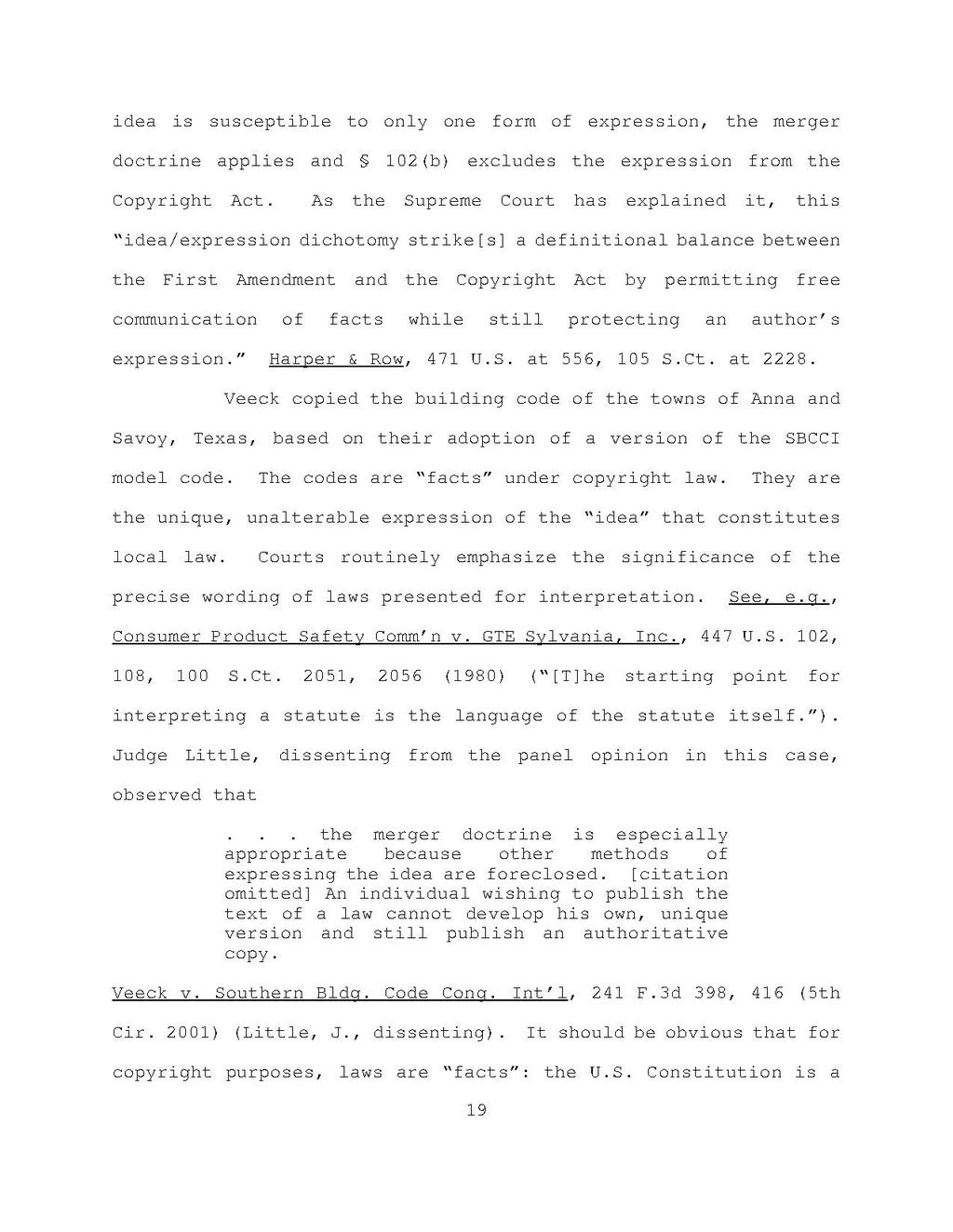idea is susceptible to only one form of expression, the merger doctrine applies and § 102(b) excludes the expression from the Copyright Act. As the Supreme Court has explained it, this "idea/expression dichotomy strike[s] a definitional balance between the First Amendment and the Copyright Act by permitting free communication expression." of facts while still protecting an author's Harper & Row, 471 U.S. at 556, 105 S.Ct. at 2228.
Veeck copied the building code of the towns of Anna and Savoy, Texas, based on their adoption of a version of the SBCCI model code. The codes are "facts" under copyright law. They are the unique, unalterable expression of the "idea" that constitutes local law. Courts routinely emphasize the significance of the precise wording of laws presented for interpretation.See, e.g., Consumer Product Safety Comm'n v. GTE Sylvania, Inc., 447 U.S. 102, 108, 100 S.Ct. 2051, 2056 (1980) ("[T]he starting point for interpreting a statute is the language of the statute itself."). Judge Little, dissenting from the panel opinion in this case, observed that
. . . the merger doctrine is especially appropriate because other methods of expressing the idea are foreclosed. [citation omitted] An individual wishing to publish the text of a law cannot develop his own, unique version and still publish an authoritative copy.
Veeck v. Southern Bldg. Code Cong. Int'l, 241 F.3d 398, 416 (5th Cir. 2001) (Little, J., dissenting). It should be obvious that for copyright purposes, laws are "facts": the U.S. Constitution is a
19
